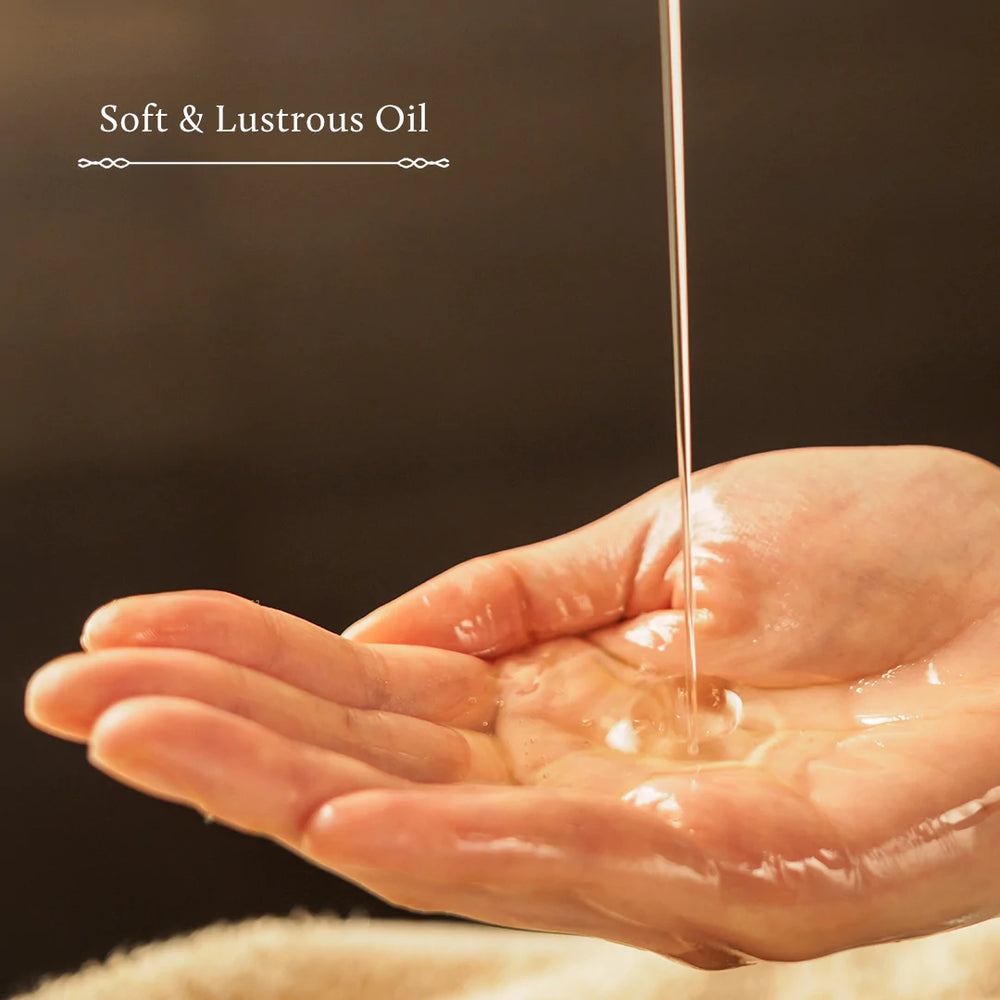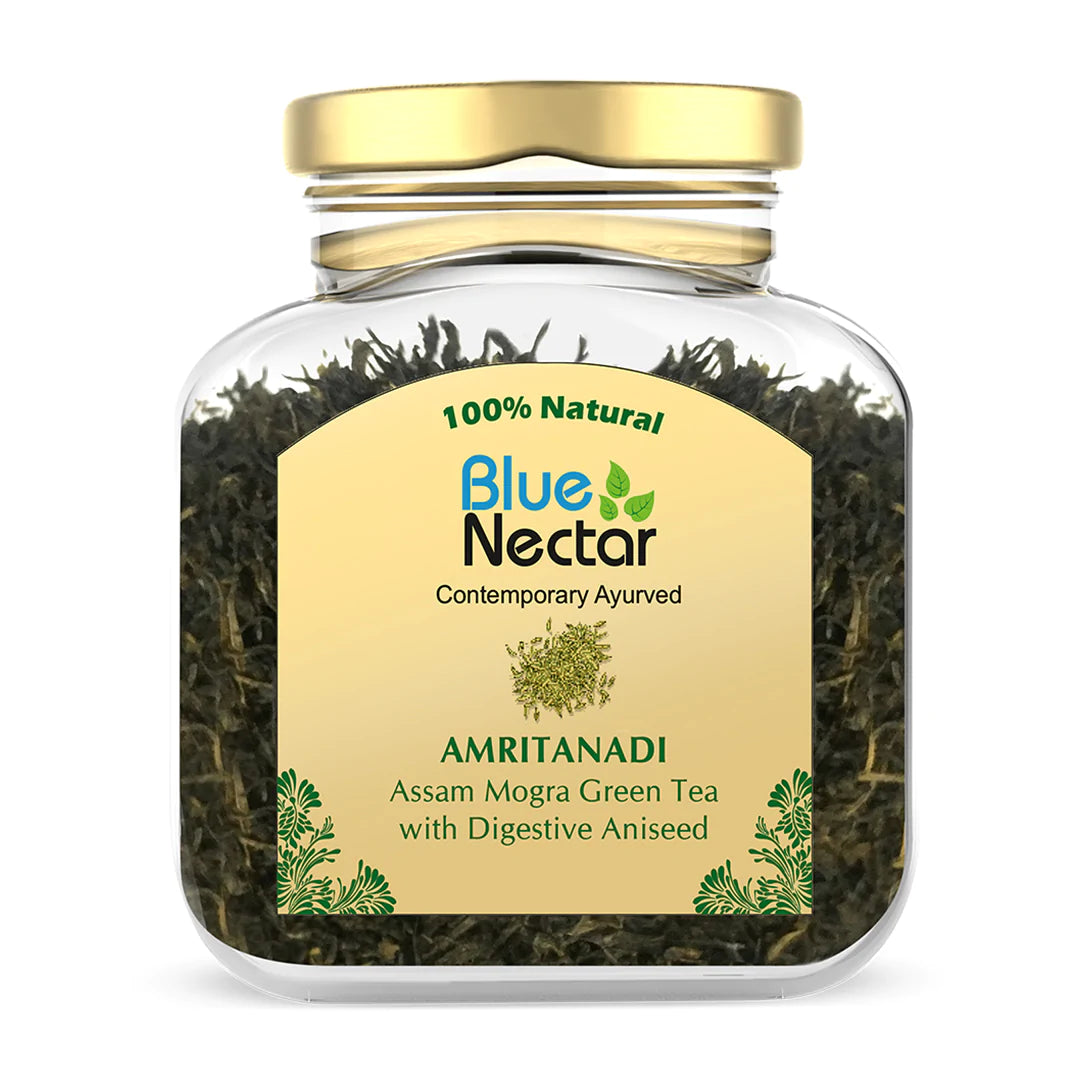How are Ayurvedic Practices Important and Beneficial?
| Estimated Reading Time: 15 minutes |
Everyone worldwide is attracted to ayurvedic treatments, which have been proven to benefit individuals. Ayurvedic medicines contain ancient practices, herbs, flowers, and other natural ingredients.
Every flower and fruit has an enormous capacity to treat disease. The perfect example of this flower is the lotus. It is a holy plant and an embodiment of the purity and natural beauty of God. The therapeutic properties have been established for all parts of the lotus plant, including the flowers, fruit, leaves, seeds, and rhizomes.Dried Lotus flowers have been used in traditional medicine to treat bleeding problems, particularly to reduce excessive blood loss during menstrual periods. By lowering the frequency of bowel movements, it aids in the management of diarrhea as well. Applying a paste made from lotus petals or a seed oil helps moisturize and renew the skin, according to Ayurveda. It must be remembered that consuming too much of any component of the lotus plant can result in digestive issues including bloating and constipation.
Table of Content:
|
Similarly, Ayurveda products attempt to achieve overall harmony and balance in mind, body, and spirit and treat illnesses with other herbs. In this article, we will examine the different applications of Ayurveda for an individual. We will emphasize Ayurveda as a top priority for many, which could help many individuals, healing methods, and possible advantages of Ayurveda.

What is the Science Behind Ayurveda?
A combination of the phrases "Ayur" and "Veda," which both signify "Knowledge" in Sanskrit. The ancient philosophy of Ayurveda is based on the fundamental principles of healthy living. The practice's central tenet is the harmony of mind, body, and spirit as a prerequisite for optimal health and well-being.
Ayurveda is a tradition that has been practiced for almost 5,000 years, and its appealing components can be found throughout the country. Ayurveda is having a bigger impact on holistic health and medical travel.
Since 2015, the global Ayurvedic market has been expanding at an average annual pace of 16.2%, which reflects the rising popularity of complementary therapies and wellness activities.
What are common Ayurvedic Practices?
In order to live a healthy mind and body, it’s essential to consume a balanced diet and exercise regularly. However, this is only the beginning. In addition to weight-loss, detoxification, and improving your mind, body, and spirit connection, Ayurvedic medicine and ancient teachings have many lesser-known practices to assist you.
1. MeditationYou can meditate in a variety of ways, from breathing awareness to moving meditation or yoga. Choose a technique you feel resonates with you and practice it on a regular basis. By practicing regularly, you will notice that the practice becomes easier and easier.

You can gain more vitality and health benefits from deep belly breathing by clearing your lungs of carbon dioxide, increasing oxygen intake, and stimulating your metabolism, as well as by allowing your abdominal organs to massage themselves as well. Deep belly breathing can also stimulate digestion and promote your metabolism.
3. Tongue ScrapingOral hygiene practices like this have been proven to remove more toxins from your tongue than toothbrushes. It is difficult to taste your food if your taste buds are covered with bacteria and plaque, so it is more likely that you will consume too much salt, too much sweetener, and will overeat.
4. Oil PullingYou will detoxify your body when you remove toxins and bacteria from your mouth, just like you would with tongue scraping. As the inventor of oil pulling in the modern world, claims it has the ability to treat various illnesses, ranging from digestive disorders to heart disease.
5. Massage
In a number of studies, massage has been shown to reduce blood pressure, increase muscle tone, reduce stress, and improve lymph flow (thereby reducing edema). It was found that abdominal massage reduces constipation and increased bowel movements effectively, according to a study conducted by the National Institutes of Health in 2009.

By sweating, your body gets rid of excess water weight, increases circulation and releases impurities from your body. Your skin is the largest organ of detoxification. When pores enlarge due to heat, they allow impurities to leave.
'Swedana' refers to an Ayurvedic treatment that involves a full-body oil massage followed by steam. The toxins are mobilized in your body, then released into the air.
7. Basti (Enema)The purpose of this therapeutic treatment is to lubricate the intestinal tract and flush toxins out of the body by introducing herbal oil into the rectum. Although this may not appeal to everyone, I have observed a drastic change in thousands of people following Panchakarma (an Ayurvedic cleansing program) and Basti treatments every day for about a week.
8. Eat Your Largest Meal at LunchtimeDuring the midday sun period, when the digestive fire is at its peak, it is believed that the digestive fire is at its most productive. This does not mean you have to start eating all you can at lunch time. Your breakfast and dinner meals should be smaller and easier to digest, so that they are easier to digest.
9. Laugh Out Loud
There are many benefits to laughing, including the release of endorphins, high blood pressure, and relaxation. Have you ever laughed so hard that your tummy muscles ached? That's what we mean by a good belly laugh. Try watching a good comedy movie, telling silly jokes, and do not forget to laugh at yourself.
10. Drink Warm Water and Ginger TeaYou should avoid drinking cold water throughout the day and with meals because it can actually reduce your digestion ability. Instead, drink plenty of warm or hot water throughout the day and with meals. You can also drink ginger tea or any green tea you like in the evening when you want to increase Agni (digestive fire) and improve your digestion.
11. Use the 6 “Tastes” in Every MealIt is considered that there are six tastes in Ayurveda: sweet, sour, salty, bitter, pungent, and astringent. Each fruit, veggie, grain, nut, and legume has a particular taste, or a combination of a few, and people should include these tastes in the diet on a regular basis.
12. Don't Eat While Feeling OverwhelmedYou're more likely to make poor diet decisions, overeat, have poor digestion, and feel unsatisfied after a meal when you're preoccupied by intense feelings. Wait until the storm has passed before you pick up your fork.
13. Take Your Time Eating
Your salivary glands produce digestive enzymes as you chew that break down your food. As a result, chewing is the first step in the digestive process. By chewing for a longer period, your stomach will be able to signal to your brain that you're full, thereby preventing you from overeating.
14. Eat in SilenceThe best part of eating a good meal with friends and family is chatting it up, but sometimes you should eat in silence as well. You'll appreciate your food more if you do, as well as hear your body's signals when you're full, which prevents you from overeating and makes you feel more satisfied.
What are myths around Ayurvedic Practices?
Here are some commonly spread myths about Ayurvedic practices along with the facts –
Myth 1: Ayurvedic treatments are only available to vegetarians.
As a rule of thumb, it is commonly believed that Ayurvedic practices consist only of vegetables and no onions or meat whatsoever.
Fact: An individual with perfect health would not change their diet. However, people with unhealthy diets that cause diseases should be treated with a healthy diet plan in order to prevent them from getting sick. Ayurvedic doctors actually prescribe meat on diet plans. There are many benefits that garlic and onions have that are rich in healing and cleansing. They are beneficial for fighting colds, preventing nosebleeds, and purifying the blood.
Myth 2: Ayurvedic treatments are luck-based.
Some of the allegations that have been made claim that not all ayurvedic medicines work or they cannot be treated unless one is fortunate enough to receive them.
Fact: Although Ayurveda treatments differ greatly from modern medicine, they have their own beneficial effects as well. As a natural skincare healing practice, it can take some time for every treatment to work, as it is a way of healing. The concepts and ideas are beyond the analysis of scientific methods. Since they are natural healing practices, they take a long time to show results. In modern medicine, symptoms are cured more rapidly, and the disease can return at any time. In contrast, Ayurvedic treatments target the source of the disease and treat it so that it will not recur.
Myth 3: Ayurvedic medicines do not expire.
The Ayurvedic system of medicine possesses no side effects or expiration dates, only positive effects, since it is derived from nature.
Fact: Ayurvedic medicines can have a long shelf life as they are derived from herbs. Some medicines only prove to be healthy after some time. This can be the case if the medicines are made from natural ingredients. But if they are man made, they can expire after some time.

Myth 4: Ayurveda is not legal.
People often misunderstand Ayurveda products to be an unlicensed practice and as a result of this myth, they do not proceed with Ayurvedic treatment for their health problems.
Fact: Essentially, Ayurveda is a medical practice with well-trained practitioners. The doshas in our bodies are believed to be the source of many of the problems facing today. Therefore, they do not require any specialization to practice draining doshas from the body.
Myth 5: Ayurveda only uses herbs
Ayurveda uses only traditional herbs with a traditional meaning. In olden times, herbs were the only remedy available to heal people. This is why the use of these herbs in Ayurveda is so interesting and original.
Fact: There are a lot of natural ayurveda products that are used in this treatment to make it more effective. For example, some of them are oils, milks, minerals, ghee, and many other products. These are the products that have many healing properties and little side effects. They use various items for different purposes.

Why is Ayurveda Being a Top Priority for Many Individuals?
Ayurveda is one of the indispensable medical treatment techniques utilized in India and outside which is influencing the development of the nation's medical system. Indians have believed in 'Kadas' and other traditional medicines to heal colds and coughs which uses the method of ayurvedic treatments. As ayurvedic treatments are known to many of the individuals, more people are drawn to the informer Ayurvedic practices benefits.
Ayurveda is a comprehensive and person-centered approach to health that has given it recognition on a global scale. People from all cultures and origins can find a road to well-being in its teachings and practices with the help of the right ayurvedic treatments. To encourage balance, vigor, and longevity, Ayurveda tackles a variety of facets of life, from food recommendations and herbal treatments to yoga and stress reduction, which makes the ayurvedic treatments to be more demanding. People all across the world can start their journey towards optimum health and harmony by accepting the wisdom of Ayurveda.
What are the benefits of Ayurvedic practices?
The traditional medical system known as Ayurveda, which has its roots in ancient India, is now widely acknowledged and accepted on a global scale. People from many cultures and origins can relate to this holistic approach to health and wellness because it offers a unique viewpoint. Some of points that reflects why ayurveda is useful are –
- Holistic Approach to Health
According to Ayurveda, Vata, Pitta, and Kapha are in a constant state of equilibrium and are responsible for maintaining health.
The main dosha combination at birth determines each person's individual constitution or Prakriti. For individualized wellness techniques that concentrate on preventing imbalances and boosting general health, it is crucial to understand one's Prakriti.
- Lifestyle and Dietary Recommendations
One of the tenets of Ayurveda is that "food is medicine." Dietary recommendations in Ayurveda place a strong emphasis on ingesting foods that maintain digestive fire (Agni) and balance an individual's dosha constitution. Consuming seasonal, whole, and fresh foods while avoiding processed foods and unnatural combinations is part of this.
For example, Vata types might discover relief in warming, nourishing meals like soups and stews, whereas Pitta types might profit from cold foodstuffs such as cucumbers and sweet fruits.
- Herbal Medicine and Natural Remedies
Ayurveda uses the curative properties of plants, minerals, and other organic materials to treat a variety of medical problems. Depending on the unique abnormalities each person is facing and their dosha constitution, these treatments are precisely chosen.
Turmeric (anti-inflammatory), ashwagandha (adaptogen), and Triphala (digestive support) are typical Ayurvedic medicines. These organic treatments seek to reestablish equilibrium and foster well-being without producing negative side effects and works as natural skincare remedy.

- Yoga and Meditation
As sister sciences, Ayurveda and yoga are an excellent match to one another.
Yoga offers asanas—physical poses—and pranayama—breath control—to improve strength, flexibility, and general vigor. Ayurveda emphasizes meditation and mindfulness techniques because they help people reduce stress, sharpen their focus, and connect with their inner selves. Including these rituals in everyday routine can help promote a peaceful and happy living.
- Panchakarma: Rejuvenation and Detoxification
Panchakarma is a thorough detoxification and rejuvenation procedure that tries to rid the body of built-up toxins (Ama) and reestablish ideal balance. This form of Ayurvedic medicine includes a series of procedures like therapeutic enemas (Basti), herbal steam therapy, and oil massages (Abhyanga). The natural healing processes of the body are reset through panchakarma, which boosts immunity, energy, and vigor.
- Stress Management and Mental Health
According to Ayurveda, mental health is a crucial component of physical health. Ayurveda aids in the management of anxiety, depression, stress, and emotional disturbances using techniques for relaxation, meditation, and individualized recommendations for lifestyle changes. Shirodhara is an activity where warm oil is continuously poured on one's forehead. This promotes relaxation and mental clarity by calming the nervous system.
- Beauty and Skincare
According to Ayurvedic natural skincare, the skin should be nurtured with organic elements that complement each person's dosha constitution.
Oils, herbal pastes, and masks applied externally can enhance the health and shine of the skin.
The appropriate digestion that results in a natural glow and vigor is another aspect of Ayurveda that promotes internal natural beauty. The 'Mukhya Abhyanga' facial massage uses a combination of medicinal ayurvedic oils and herbs to deeply exfoliate, revitalize, and enrich the skin.

- Personalized Wellness Approach
Unlike systems that assume that one size fits all, Ayurveda acknowledges the individuality of every person. To make individualized recommendations, trained Ayurvedic practitioners evaluate a person's dosha constitution, existing imbalances, and lifestyle factors. This strategy guarantees that interventions are matched to a person's unique requirements and objectives.
- Coherence With Modern Medicine
While providing an in-depth viewpoint, Ayurveda should not be used in place of necessary modern medical treatments. Integrative medicine ensures a holistic and well-rounded approach to health and wellness by fusing Ayurvedic ideas with Western medical practices.
How has the Treatment of Ayurveda Been Increasing?
India is committed to promoting its renowned medical system, Ayurveda, around the world, years after it was first developed. The move toward Ayurveda's natural healing abilities is gradually gaining significance in a society where drugs and allopathic healthcare practices predominate. Through the use of herbal and natural therapies, this healthcare facility promotes a healthy lifestyle and prevention over cure.
During the past few years, the market of the ayurveda products has practically increased threefold, and it is anticipated that within the next three to five years, it will increase approximately by four times, from 6 billion to nearly 28 billion Indian rupees. Ayurveda products available in the market also offers the affordable skin care routine for many of the individuals.
Not only has the Ayurveda industry quadrupled in size, but more and newer trends are also making their way onto the market. As a result, Ayurveda has evolved from being only the science of living to include many cutting-edge trends, such as the development of Ayurvedic cancer treatments. On the other hand, more recent Ayurvedic products that can be applied topically to the skin are on the way, including newer Ayurvedic supplements and acts as a non toxic agent which promotes the natural haircare routine.
The Ayush department of our government, which places a lot of emphasis on Ayurveda and yoga, is partially responsible for the enormously rising trend. Future prospects for Ayurveda are highly promising.
In The Final Analysis -
Nowadays people are more aware of their purchasing habits than ever before. With its various offers and advantages, Ayurveda makes routines simpler. The trust in it and the desire for a natural solution are further factors that influence people to turn to it. People from everywhere who were unaware of the ayurveda have begun to appreciate its many advantages and are keen to try it out. With this mindset in mind, some of the best companies are hopping on the Ayurveda bandwagon and trying to sell their goods to many individuals. Numerous domestic companies, such as dabur and patanjali, are also making an effort in order to reach a large number of individuals which could help them to grow a lot.
Recommended Products by Blue Nectar:
Amritanadi Assam Loose Green Tea with Decongestant Lemongrass
Balalakashadi Jasmine Bath & Body Massage Oil | Skin Hydration & Relaxation
Kumkumadi Tailam Face Serum for Glowing Skin with Pure Sandalwood & Saffron
Shubhr Kumkumadi Night Repair Cream for Women | Ultra Hydration & Skin Repair










